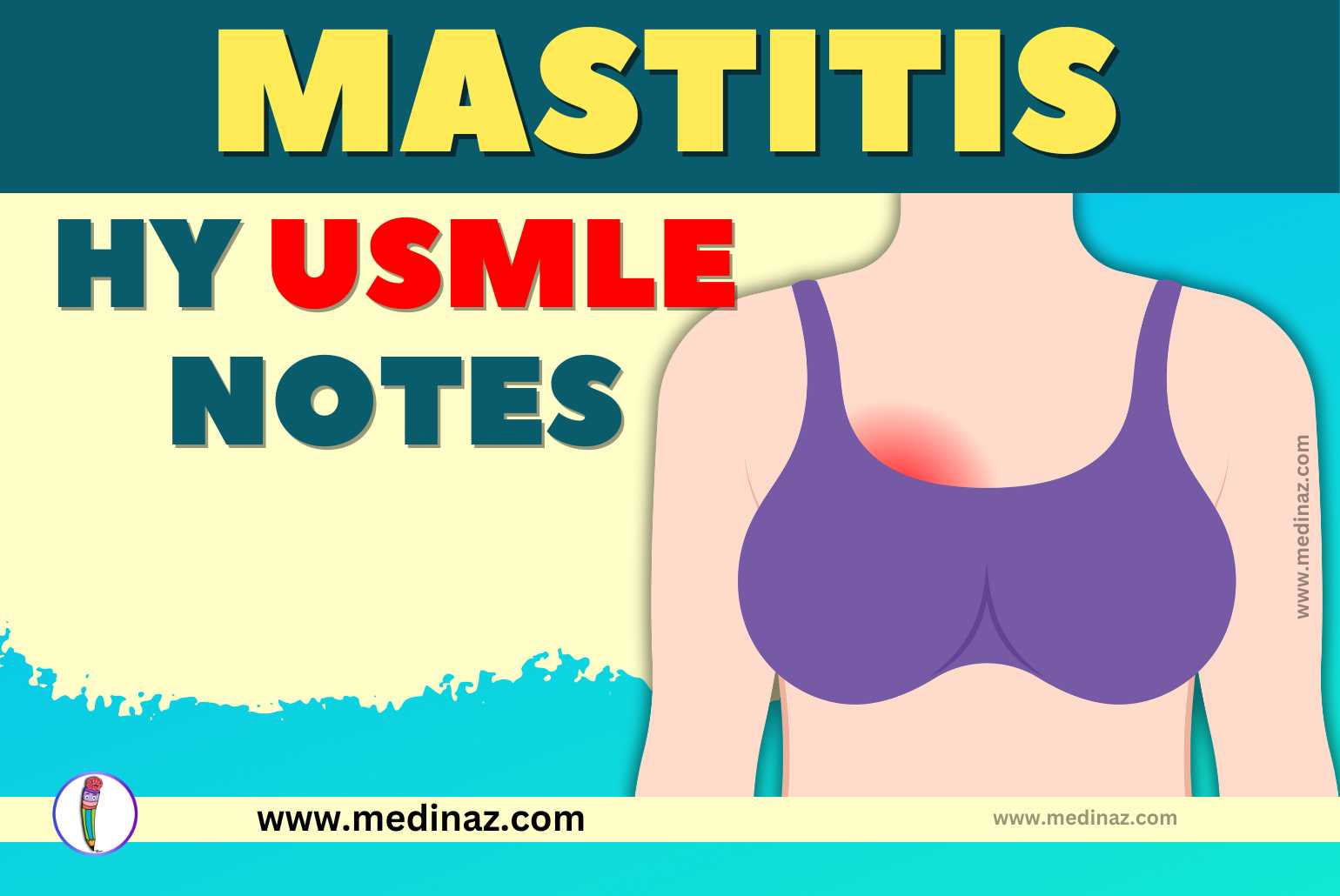Mastitis USMLE Notes & Mnemonics contains all the high-yield points you need to know.
Definition:
- Mastitis: Inflammation of the breast tissue, often associated with infection and lactation. (Ref)
Epidemiology:
- Most commonly occurs in breastfeeding women (lactational mastitis).
Etiology:
- Infectious: Typically due to milk stasis with subsequent infection by skin flora.
- Bacteria: Staphylococcus aureus (most common), Streptococcus spp.
Pathophysiology:
- Milk Stasis: Blocked milk duct leading to milk accumulation and inflammation.
- Infection: Bacteria enter through cracked or damaged nipples.
Clinical Features:
- Breast Tenderness: Localized pain and warmth.
- Erythema: Redness over the affected area.
- Fever and Malaise: Systemic signs of infection.
- Swelling: Edema of the affected breast tissue.
- Purulent Discharge: May be present if an abscess develops.
Diagnosis:
- Clinical Diagnosis: Based on symptoms and physical exam.
- Ultrasound: Used to detect an abscess if suspected.
- Culture: Milk or discharge culture can confirm the pathogen, typically done if treatment fails or abscess suspected.
Management:
- Antibiotics: Dicloxacillin, cephalexin; if MRSA is suspected, consider trimethoprim-sulfamethoxazole or clindamycin.
- Pain Control: NSAIDs or acetaminophen for pain and inflammation.
- Continue Breastfeeding: To help clear the blockage and prevent milk stasis.
- Warm Compresses: To promote drainage and comfort.
- Incision and Drainage (I&D): If an abscess is present.
Prevention:
- Proper Breastfeeding Technique: To prevent nipple trauma and milk stasis.
- Frequent Emptying of Breasts: To avoid milk accumulation.
High-Yield Mnemonic: “MASTITIS” for Management
- Medications (Antibiotics)
- Analgesia (Pain control)
- Supportive Care (Rest, fluids)
- Therapeutic Ultrasound (If abscess)
- Instruct to Continue Breastfeeding
- Show how to Express Milk correctly
Chart: Clinical Presentation and Management of Mastitis
| Clinical Feature | Presentation in Mastitis | Management Step |
|---|---|---|
| Pain | Localized, severe | NSAIDs, Supportive care |
| Erythema | Red, swollen area on breast | Antibiotics, Warm compresses |
| Fever | >38.0°C (100.4°F) | Antibiotics, Fluids |
| Breastfeeding Status | Often lactating | Continue breastfeeding |
| Discharge | Possible purulent discharge | Culture, Antibiotics |
| Abscess Formation | Fluctuant mass, localized pain | Ultrasound, I&D |
Check other important USMLE Notes
Note: On the USMLE, mastitis may be presented as a postpartum woman with unilateral breast pain, tenderness, erythema, and systemic symptoms like fever. Recognizing the relationship between lactation and mastitis is key. It’s also essential to distinguish between simple mastitis and an abscess, as management will change with abscess formation requiring I&D. Always encourage continued breastfeeding or pumping to alleviate symptoms and prevent milk stasis.
A Visual Learning Platform





